

#1 Creating a Self-built Platform
Keywords: micro-residency, D.I.Y, space management
Inviting organizers of small yet distinct artist residencies, this session asked the participants to introduce their self-built spaces as well as art projects. The speakers included Tatsuhiko Murata, who has been running an independent, well-established residency, Youkobo Art Space, for 30 years in Suginami ward, Tokyo, and Katsumasa Iitaka from ANEWAL Gallery, which has been engaged in community development projects through utilizing artist residencies at alternative locations within the city and treating the whole of Kyoto as a single large platform for art. Azumi Akai from HOSPITALE served as the facilitator for the discussion. Harnessing a building formerly used as a hospital, HOSPITALE runs art projects as well as an artist-in-residence program in partnership with Tottori University.
Based on the case studies that each speaker introduced, they asked one another questions about their respective activities and a discussion unfolded on the things they have learned from launching and running their spaces as well as their challenges and future prospects.
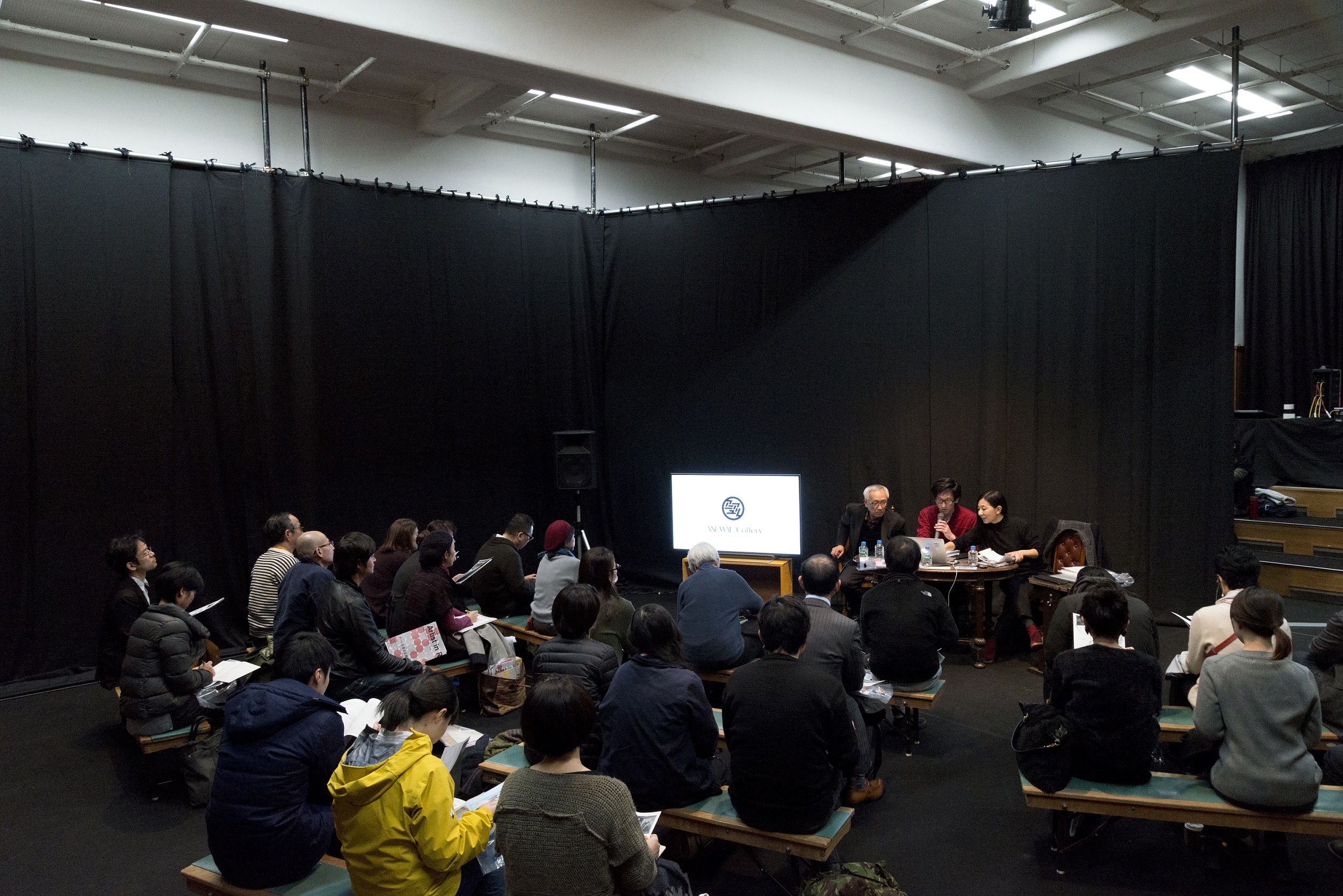
Report by the facilitator, AKAI Azumi
The key idea of a DIY approach or self-building is to use existing things. Having a grand plan or money is not necessary. As long as there is internal necessity and motivation for creating something that does not exist yet, along with creativity (having a small group of friends, of course, is a plus), anyone can start a project out of mere dreams or ideas right away. This is precisely what the speakers in this session have been putting into practice. Youkobo Art Space has its roots in the studio space the artist Hiroko Murata offered to her friends and acquaintances as accommodation when they visited Tokyo. With the dual mission of being independent and communicating the social significance of art, Youkobo Art Space is characterized by its constant approach to management from the perspective of artists. ANEWAL Gallery, on the other hand, started when roughly 30 creative professionals, including designers and architects, came together to make use of a vacant house in Kyoto. What makes the space distinct is its nimbleness and organizational capabilities that develops activities from each member’s interests and by penetrating into the lives of various people in urban space.
The grass is always greener on the other side of the fence. The color of green, though, has various gradations; each region has its own “green” depending on the natural features and climate. Artist residencies are supposed to be diverse. The resources of any given region, from the materials to skills, spaces, and knowledge, are always different, and it is precisely because of these differences that something truly special can emerge. Or at least, this situation is unavoidable. There is no one ideal or “right” kind of artist residency; rather, it is the variety of facilities as well as programs that provides the answer. And this conclusion inevitably leads to a potential for independent yet supplementary relationships built up by a network of many unique individuals. During the session, I saw a light illuminating the future.
Speakers
IITAKA Katsumasa, ANEWAL Gallery
After studying urban planning and architecture at university, and working in an architectural design office, Iitaka established the ANEWAL Gallery in 2004 with artists and creators. With ‘Outdoor gallery’ as the concept, he is working to connect art and culture with the community and public in a variety of urban spaces, from subways to derelict buildings and important cultural properties. Iitaka creates and utilizes these spaces as a resources for human activities and explores their potential alternative uses. He is the representative director of the NPO ANEWAL Gallery and vice-president of Kyoto Creative Network.
MURATA Tatsuhiko, Youkobo Art Space
A representative of the Youkobo Art Space, in 1989 Murata and his partner Hiroko opened Sosakukan as a place for artists to stay, create and exhibit. He is engaged in activities that aim to foster artist to artist interactions and bridge cultural differences through art. Murata named his one-of-a-kind AIR programs “Micro Residency” which are led by artist and run on a micro-scale, whilst also promoting global networking.
AKAI Azumi, HOSPITALE
After working as a curator in the Fine Art Department of Tottori Prefectural Museum, Akai became in charge of Artist in Residence project at Tokyo Wonder Site. Since then, she has been involved in a number of international art festivals and AIR Programs across Japan. In 2012, she planned the exhibition “HOSPITALE” in a disused hospital in Tottori city, a project which she continues to work on, and in 2013 she opened ‘Kotomeya’ in an old inn. AKAI is currently involved in projects relating to the daily lives of people, and various other co-working spaces and AIR programs.
#2 Academy+Art, Industry+Art
Keywords: exchange between different fields, mutual effect, coordination
This “Academy+Art, Industry+Art” session featured Yoriko Ishizawa, the coordinator of Creative Residency in Arita, and Aya Tsuboi from Kavli IMPU, which runs a residency program as a part of the institute’s publicity and outreach activities to foster exchange between scientists and artists. The speakers dis- cussed artist residency programs as platforms where science and technology as well as local, traditional industries intersect with art. Mami Katsuya from Kyoto Art Center served as the facilitator.
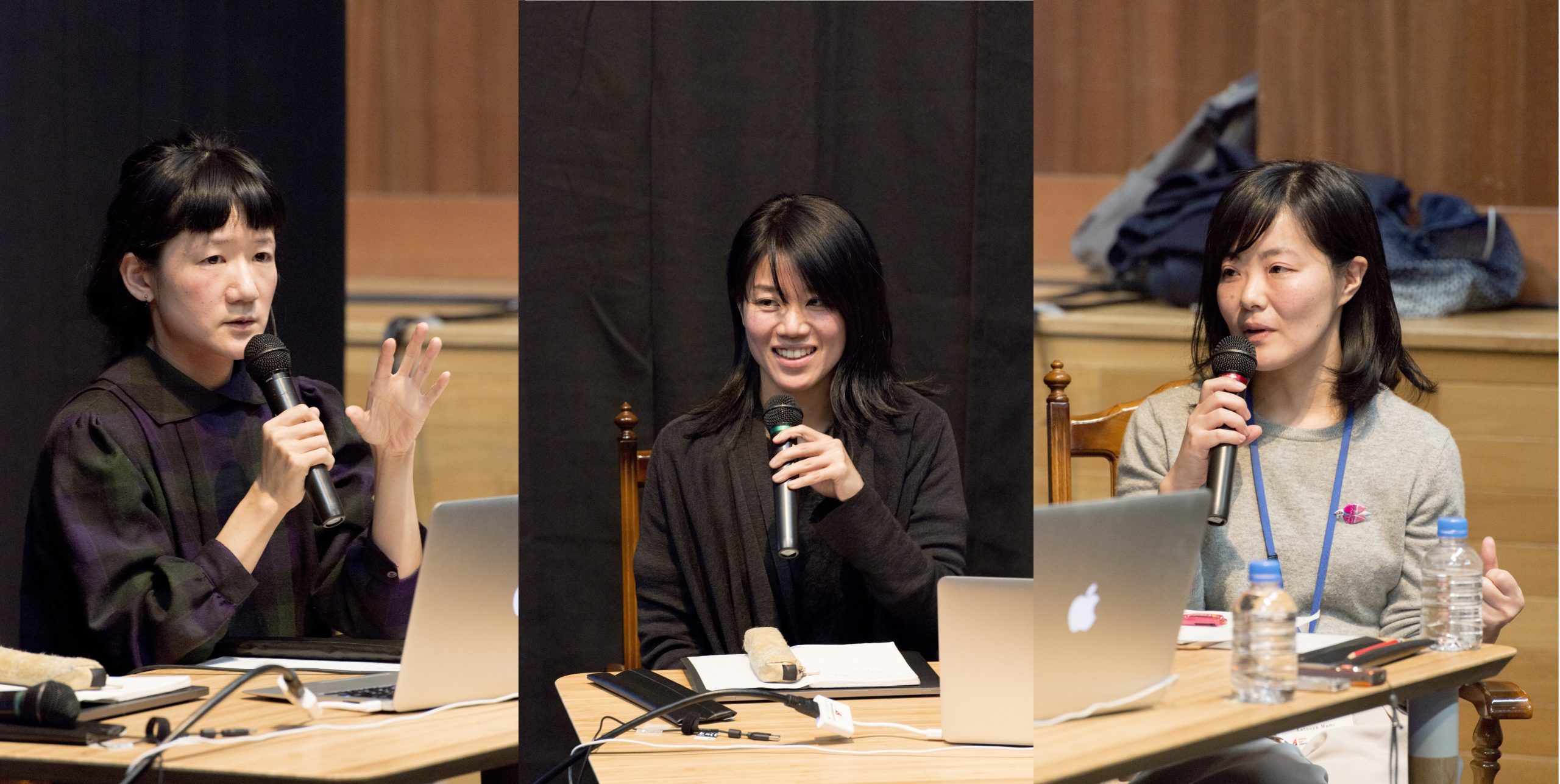
Report by the facilitator, KATSUYA Mami
Many artist residency programs in Japan accept artists regardless of their nationalities and artistic categories, and are quite generic in the sense that they do not require artists to specify the types of projects they will engage with during the residency period. This, however, also makes it difficult for artists to identify the distinctive features that may attract them to a program or region. From this perspective, a discussion unfolded on the topic of building unique artist residency programs with available local resources based on the case studies of Creative Residency in Arita and Kavli IMPU.
Arita porcelain is known for its smooth surface texture and advanced technical level, including delicate painting. Kavli Institute for the Physics and Mathematics of the Universe, on the other hand, consists of researchers working in the fields of physics, mathematics, and astronomy. Listening to these two speakers who manage residency programs in very different fields, once again I felt the importance of meticulous coordination in order to connect these spheres to art.
A wide range of creative professionals stay at Creative Residency in Arita, including product designers and contemporary artists, and, according to their interests, the residency program introduces them to artisans and wholesale companies in order to create artworks and prototypes together. This matching is the key to the program’s success.
At Kavli IMPU, the selection of participating artists by Tsuboi, who originally studied at art school and is interested in science as a form of technology connected to society, is what makes the pro- gram so appealing. Artists and researchers staying at the same facility and coexisting as neighbors incorporate something more meaningful than actually producing work collaboratively.
Speakers
ISHIZAWA Yoriko, Creative Residency in Arita
Ishizawa is coordinator at Creative Residency in Arita. She studied architectural design at university in the U.K. and recognizes the importance of design not only in ‘forms’ but in programs. After returning to Japan, Ishizawa became involved in creating mechanisms that interesect architecture, art and design. In 2014 she became manager for a joint project between the Embassy of the Netherlands and Saga Prefecture, which tool place two years later in 2016. Other projects involved developing a brand with a designer for Arita ware, and since 2016, she has been engaged in AIR program in Arita and is currently exploring the potential of traditional industries.
TSUBOI Aya, Tokyo University Kavli IPMU
Tsuboi is a graduate of the Collage of Sociology at Rikkyo University, and Chelsea Collage of Art. Since 2009 she has worked at the Kavli Institute for Physics and Mathematics of the Universe (Kavli IPMU). Tsuboi organizes residency programs, lectures by scientists and philosophers, in-depth dialogues between scientists and artists, and a variety of public programs for mutual exchanges by bringing art and philosophy into science. By re-examining the arrangement of science, art and philosophy, with the presence of non-specialists, she aims to create an all-inclusive philosophical construct accompanied by a new image of man.
KATSUYA Mami, Kyoto Art Center
As program director at Kyoto Art Center, Katsuya oversees AIR programs and exhibition projects. She assumed her current position after serves as an art coordinator at Kyoto Art Center and as curator for the Yuhisai Kodokan. Katsuya builds and researches AIR networks and this includes participating in the meeting of ‘Res Artis”, a global AIR network. She also serves as residency jury for the contemporary art festival ‘Sesc_Videobrasil’, held in Sao Paulo, Brazil.
#3 Matching Artists and Artist-in-Residence Programs
Keywords: matching, criteria, selection methods
How their programs do individual artists all over select aims the an and world? artist wishes residency What from are program suited to the wide array of important criteria residency providers should pay attention to in the selection process? How do the expectations of program organizers and desires of artists correspond? This session featured organizers who have rich experiences in coordinating many artist residency programs to discuss is- sues of how we can better match residency programs with artists. Serving as the session facilitator, Mami Odai is the director of Sapporo Tenjinyama Art Studio and has knowledge about both domestic and international artist residency programs. The speaker was Yuichiro Yoshida, the director of Kinosaki International Arts Center, which is developing a bustling program of activities as an artist residency specializing in the performing arts. The wide-ranging and accessible discussion covered such topics as the difference between visual art and performing arts residency programs as well as relationships with government bodies and the system design distinct to a specific region, and artist selection criteria and the process of matching up artists and residency programs.
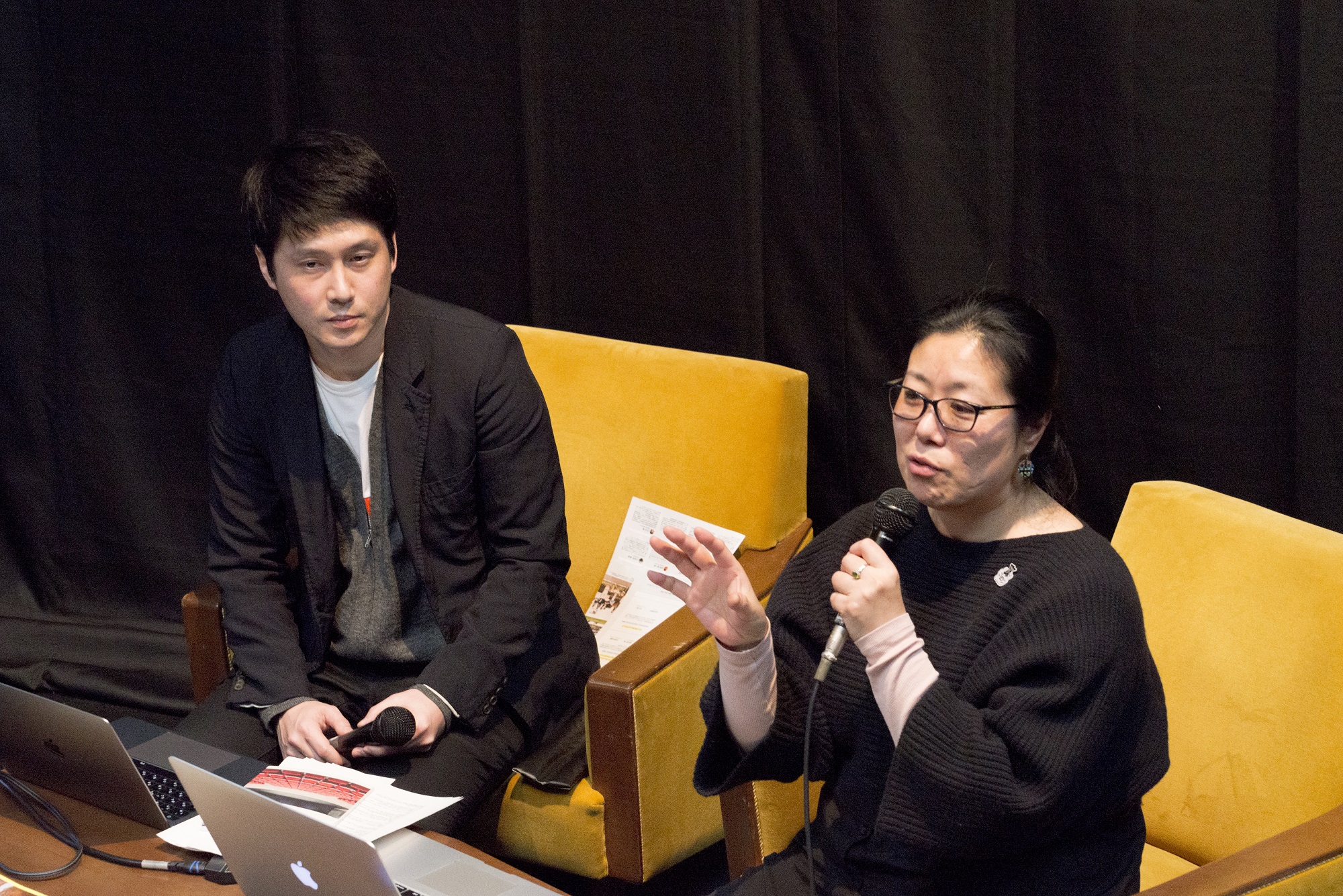
Reports by the facilitator, ODAI Mami
Whenever we look at a residency program as a site for supporting art, two types of protagonists—the artist and organizer—appear. Each residency gives birth to its own drama as the simple motivation of a participating artist intertwines with the much more complicated situation and motivation of an organizer. Characterized by its interactions with people, the site of an artist residency is indeed very raw. Since it is a once-in-a-lifetime experience for each protagonist, a “happy ending” is preferable. We all want to finish a program saying that life will now carry on with our good memories. In this way, we discussed the process of matching up artists and residency pro- grams.
Through the example of Kinosaki International Arts Center, we learned that, against a backdrop of the local municipality’s delicate circumstances, developing a detailed plan and presenting a clear vision led to the high reputation the center enjoys today. This case should offer practical tips for those looking to establish a residency program in the future as well as existing artist residencies that plan to reconstruct and upgrade their programs.
Survival has never been easy for artists. In the current environment surrounding artist residencies, we have to be conscious of the shift that has taken place whereby artists are now the ones who select residency programs, rather than residencies selecting artists. If artists understand that they can choose a program, not vice versa, then what they stand to gain becomes clearer. That being said, the situation for artist residency programs in Japan is not at all dry or bleak. The exchanges made by the session’s participants warmly suggested that, due to changes in society, further unique residencies will emerge. And if existing programs can assert their distinctive features even more, then the diversity of society and life will truly become synonymous with places that support art.
Speakers
Yuichiro Yoshida, Kinosaki International Arts Center
After working as coordinator at Tokyo Wonder Site and Festival/Tokyo, Yoshida became program director at Kinosaki International Arts Center specializing in performing art in Toyooka City, Hyogo Prefecture, where he selects resident artists and prepares annual performing programs. He is currently shaping an open art network for North Kinki and Sanin regions, and is a project member of the Marebito Theatre Company.
ODAI Mami, Sapporo Tenjinyama Art Studio
Odai returned to Japan following a period of training and research in to cultural politics and AIR networking at ‘TransArtists’ in the Netherlands. She currently operates ‘Move Arts Japan (Command N)’, which is a portal site for artist mobility, AIR Projects in Japan and abroad. She was invited by VISUAL ARTS FOCUS (France). Odai is also AIR director for an art and research centre, and the Sapporo Tenjinyama Art Studio.
#4 What Kind of Environment Do Artists Find Attractive?
Keywords: environment, communication, obtuseness
In this session, artists from Japan who have gone to stay in different places in the world and engaged in artistic practices in response to specific local cultures and environments discussed the qualities that make residency programs attractive for artists. Daisuke Kuroda is active in East Asia and Japan and serves as director of Tsushima Art Fantasia, which runs a residency as well as exhibition pro- grams. Makiko Yamamoto’s practice is based on continuous engagement with the people and places she has encountered at residencies with a DIY approach outside of existing residency facilities and conventional frameworks. Serving as facilitator for the session was Soichiro Mihara, who creates media art at periphery sites in terms of their natural environment and geographical features. The discussion started from the fundamental question of why artists cling to the process of going to and creating work at a certain place, and what at- tracts them to an artist residency program. While the increase in the number of artist residency programs and development of structures has expanded the available options for artists, it has also limited certain ideas. Touching on this situation, the session encompassed a lively discussion and advice for everyone involved in residency programs.
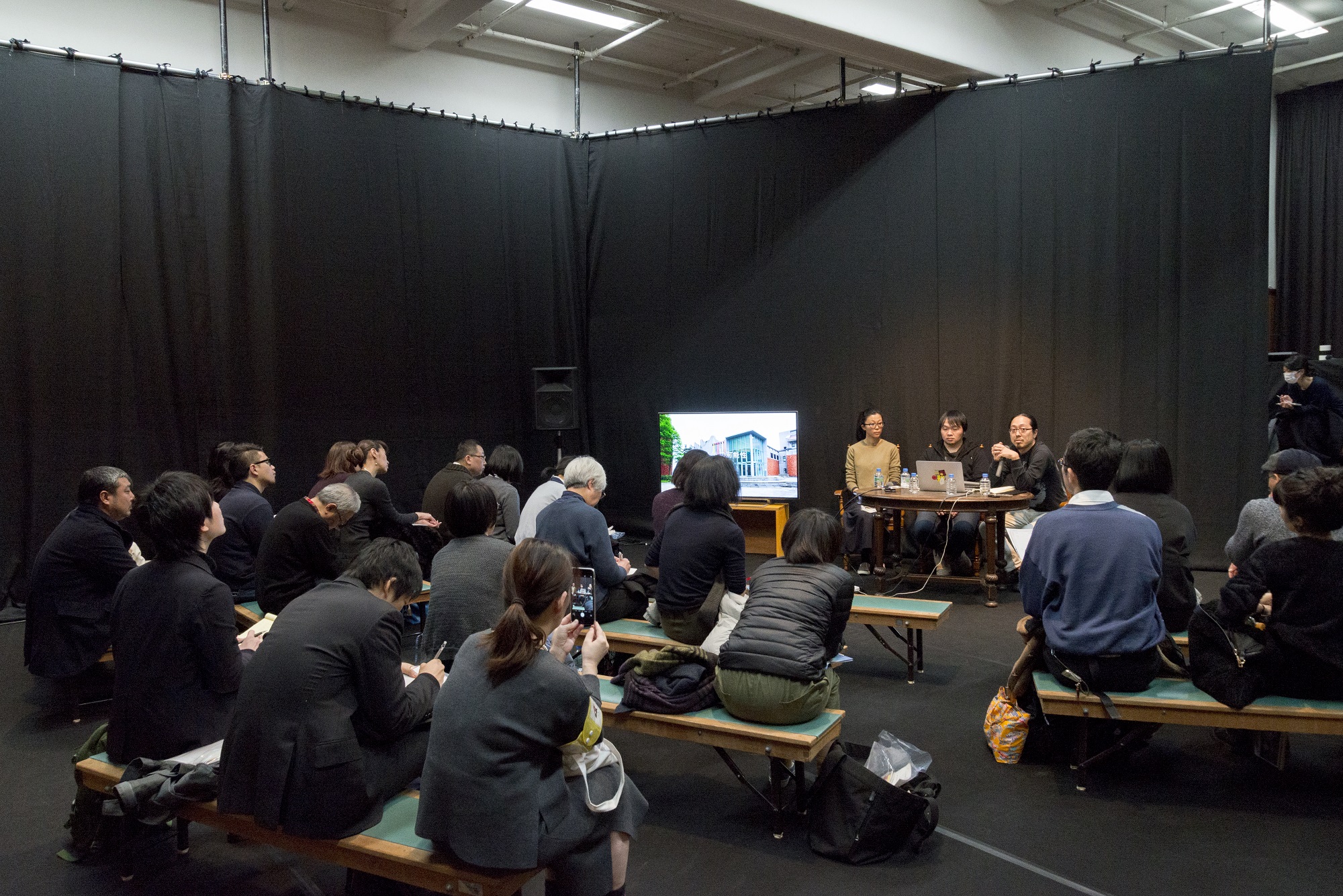
Report by the facilitator, MIHARA Soichiro
This session started with two facts. Whether it is an existing program or independent one, there is only a 1/n possibility. If a residency offers “favorable” terms, then “n” (the number of applicants) can be thousands. The world is full of interesting residencies. At any rate, artists now enjoy almost limitless options when it comes to finding a residency that will accept them. It is easy to share if these “favorable” terms mean good monetary compensation. But when it comes to the “interesting” features of a program, things become much more complicated. Presuming that interesting aspects are determined by the timing of the encounter, I focused strictly on introducing three case studies in order to present possibilities that could arise for anyone in the future. This is what I felt throughout the session. Staying in a residency pro- gram and creating work for a short period of time is largely influenced by the support system on site. It is important for both artist and residency provider to act like conspirators focused on a scheme. And since it is professional work, neither side needs to be reserved. In regard to the characteristics of a program, the time axis was suggested as a feature that possibly distinguishes one program from others. Al- though it sounds inefficient to consider artists whose imaginations do not fit to the framework of general residency programs that take place once for several weeks or months, it seems to offer the potential to achieve something unique within the glut of programs that exist today. Other topics raised in the session and Q&A included how a residency with accommodation facilities offers the joy of experiencing traces of past artists who have stayed; the potential for a long-term residency to foster deep commitment to an artwork; and how sharing production processes as well as everyday life at a residence with fellow artists can build possibilities for future projects while the network cultivated during a residency program generates publicity. Given that a residency program is highly dependent on the capability and motivation of its staff, transfers or departures of members of the team frequently take things back to square one. Speakers also discussed their ideal residency programs. In the Q&A session, Kuroda mentioned the importance of the basic living conditions as well as sup- port structure of a residency, while Yamamoto talked about the importance of having enough means to learn local information beforehand. I talked about how an artist today is considered like a probe that freshly and honestly perceives a place, rather than someone creating materially based artwork. Although we covered many things, we could not touch on the issues concerning language and family, which I hope can be discussed at another juncture.
Speakers
KURODA Daisuke, Sculpture
Kuroda completed his PhD at the graduate school of Hiroshima City University. He produces video, sculpture and installations that consider the relationship of human narratives with the physical environment, i.e., geography, climate and history. He recently produced the ‘Absent History of Sculptures’ based on his research into the history of modern art of East Asia. Notable exhibitions include ‘Tsushima Art Fantasia’ (Nagasaki, Tsushima city), ‘Art Setouchi 2016’ (former Mito Primary School, Shodoshima Island), and ‘Bankart Life Ⅳ: Dream of East Asia’ (Bankart 1929, Yokohama), etc.
YAMAMOTO Makiko, contemporary art
Yamamoto graduated with an MA from the Department of Concept and Media Planning at the Graduates School of Arts, Kyoto City University of Arts. She returned to live and work in Kyoto after having lived in London for four years from 2008. She has organizes many projects that focus on generating communication with others based on over looked notions such as common sense and customs. Yamamoto has exhibited in solo and group shows in London, Tasmania, Paris, Mito, Kyoto and Tokyo.
MIHARA Soichiro, Media art
Mihara considers and presents systems as art using variety of media including sounds, bubbles radiant light, rainbows, microorganism and moss. Since 2001, he has conducted a series of projects both in Japan and abroad under the theme of ‘blank’, which he uses to examine the relationship between technology and society. Mihara has participated AIR programs at ten different venues in eight different countries, ranging from the art centers to more extreme conditions such as the Arctic, tropical rain-forests, militarized borders and bio-art laboratories.
#5 Planning International Art Projects
Keywords: networks and mobility, curation in multicultural contexts, dialogue and feedback
Inviting curators highly experienced in organizing international art projects and exhibitions, the session discussed the potential for international exchange and communication through art to generate responses and circulation from the perspective of curatorial practice. Guest speakers included João Laia, a Portuguese independent curator based in London who has been organizing exhibitions in various parts of the world, and Kristi Monfries, who has been developing the Instrument Builders Project (IBP) in Australia and Indonesia. Aya Aoshima, who has been involved in international exchange programs and residency projects as an art coordinator, served as the facilitator. The Instrument Builders Project is an experimental initiative in which artists from different cultural backgrounds come together and create new devices that expand the definition of a “sound instrument”. It aims to transcend cultural differences and language barriers through creativity and sharing the skills, resources, and ideas that participating artists have. On the other hand, Laia, who started his career re- searching society through video and visual expression, is also interested in how art represents society and how social dynamics evolves on artistic platforms. He curated an exhibition in Moscow that focused on the metanarratives now confronting the contemporary world, including such technology as artificial intelligence and the Internet as well as ecosystems and criticism of anthropocentrism. In addition, he introduced an art festival in Brazil that centers on over- looked art practices, as opposed to contemporary art with its focus on European and North American art or the dominant trends in art history. Laia discussed how art itself is not autonomous at all but rather formed by the larger dynamics of society. Based on the sharply contrasting examples presented by the two speakers, the discussion developed in a vibrant way.
Report by the facilitator, AOSHIMA Aya
Our discussion on the somewhat overly broad topic of “international art projects” seemed initially difficult to pin down. As such, I started by pointing out that the term “international” means different things depending on our respective positions. For instance, any exchange with the outside world is considered “international” for people living in Japan. But for areas where a wide range of people come and go across borders shared by various neighboring countries or for people who work and move all over the world, the term must evoke quite different understandings or senses. If we think about the examples presented by the guest speakers with this perspective in mind, IBP organized by Monfries signifies a micro model that focuses on the cultural backgrounds of the participating artists, regional features, and their personal expressions.
Artists are given freedom regarding what they create, so the role of the curator becomes more about curating the participating artists as a group than curating the project itself. In addition, how the project has been organized through a somewhat Asian-style collective way of working reflects in a broad sense the art scene in Yogyakarta, Indonesia.On the other hand, the exhibition curated by Laia did not use such geographical or scale contrasts as “national and domestic” or “local and global”, but rather suggested that more complex elements like technology, virtual reality, ecosystems, and economic zones are critical for thinking about “international art” today. Laia remarked that in an era when we are instantly connected to each other via the Internet, personal issues and local events cannot be detached from international contexts.
The contrasting cases presented by both speakers formed a nice balance, which helped the audience engage with the vibrant discussion. A key point when it comes to thinking about international art projects is the intersection where micro perspectives that pay thorough attention to individual expression and macro perspectives that perceive the world panoramically meet.
Speakers
João LAIA, independent curator
Born in Portugal, Laia is a curator and writer. He completed his MA in Film Studies at King’s College London. He is interested in sociology, film studies and contemporary art which he draws upon to explore the relationship between philosophy, social structures, technology and representation. Laia has curated the exhibition H Y P E R C O N N E C T E D (Moscow, 2016) among many others including Spain, Russia, Brazil and the U.K. As a curator he has participated in the international art festival ‘Contemporary Art Festival Sesc_Videobrasil’ (Sao Paulo).
Kristi MONFRIES, independent curator
Born in Australia, Monfires is a curator, manager and producer. Since 2009 she has been based in Jakarta, Indonesia, from where she works internationally, exhibiting in the Czech Republic, the Netherlands, and Australia. Monfries is interested in practicing cross-genre art and is involved in projects that connect the art communities of Australia and Indonesia, including the Instrument Builders Project. She is also manager of programs at Bumi Peduma Rahayu, a new art centre that focuses on sustainability.
AOSHIMA Aya, art coordinator
While managing residency projects and international art projects, Aoshima is studying for her PhD at the Graduate School of Letters, Osaka University where she is looking at cross-disciplinary artistic expressions with a focus on music and sound. She was curator/project manager of ‘ART CAMP TANGO 2017 – Listening, Seeing, Being There,’ and is a part-time lecturer at the Faculty of Art, Osaka Seikei University, and international coordinator at Kyoto City University of Arts.
#6 Asian Alternative
Keywords: Asian art scenes, alternative space, diversity
Introducing alternative spaces and activities in both the art and music scenes in Asia that have drawn attention in recent years, this session focused on the intersection between people and ongoing examples of dynamic artistic expression. The speaker was Kanako Yamamoto from Offshore, an online magazine that researches and introduces experimental music scenes in East Asia from a unique perspective, while serving as discussion facilitator was Nozomu Ogawa, who runs Art Center Ongoing in Kichijoji, Tokyo, and has researched 83 alternative art spaces in nine Southeast Asian countries. Ogawa shared his insight that the art scene in Southeast Asia is sustained by independent, alternative art spaces, rather than public money or institutions. Based on his experiences of encountering these places, people, and activities, he explained that, as op- posed to attempting to institutionalize them, these places are run in organic and arbitrary ways. Yamamoto described how the experimental music scene in China is mainly shared on Chinese social media, and that there is a lot of information and energetic activities that are inaccessible for people in Japan. The discussion further developed to argue that information and values shared on a network or by connections between people, rather than a specific place or institution, can form new types of communities. As symbolized by the term “organic,” vague and loose connections in the Asian art scene can be a flexible survival strategy while maintaining independence amid drastic social and political changes.
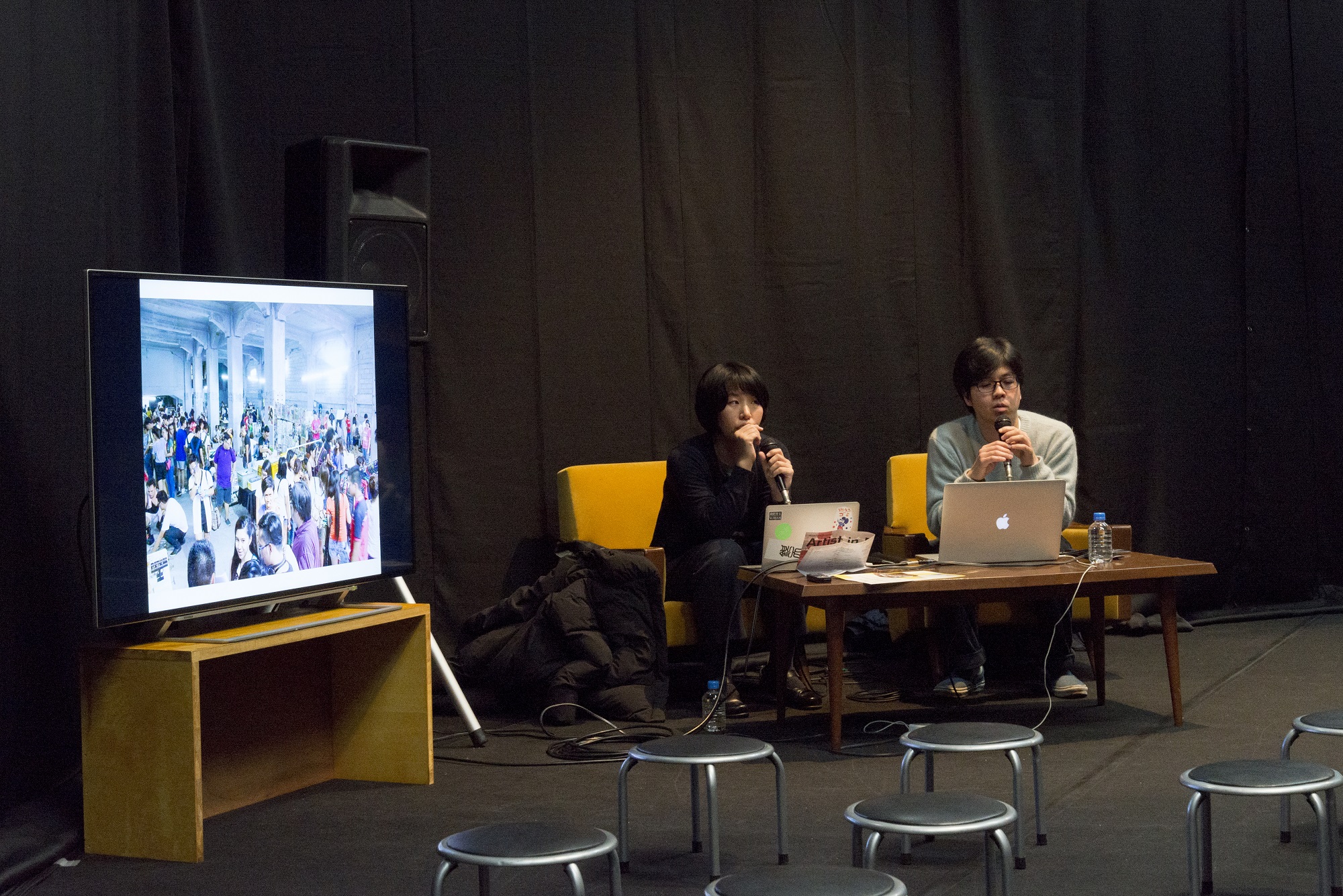
ここにキャプションがはいります。
Report by the facilitator, OGAWA Nozomu
It was extremely meaningful for me to have the chance to hear directly from Yamamoto detailed accounts of alternative activities in the Greater China region of China, Taiwan, and Hong Kong. Obviously, even when we say “Asia,” the social conditions differ in each country. Especially in the East Asian countries that belong to Greater China, the difficulty of developing cultural activities sustainably due to official censorship and rising rents made me think about many things. In Southeast Asian countries where I conducted research on alternative spaces, while governments do censor activities once in a while, it is not as strict as it used to be. And in today’s social media world, there are many loopholes whereby we can evade government censorship. The fact that virtually no support comes from governments or corporations is something shared by both regions, yet the ways that alternative spaces in East Asia and Southeast Asia survive are very different. What about the situation in Japan? In comparison to other Asian countries, various grants and forms of support are available, in addition to many museums, galleries, and artist residency facilities. The cultural environment in Japan seems much more privileged than any other Asian country. However, notwithstanding these favorable conditions, there are very few alternative spaces in Japan, and a climate of self-censorship in art and culture has become more common nowadays. As we examined a wide range of activities in neighbor- ing countries that have developed unique ways to survive, it made me think that we should reconsider the direction where we are heading in the future.
Speakers
YAMAMOTO Kanako, Offshore
Yamamoto makes it her life’s work to interview people who engage independently in expressive activities, including musicians and artists working in Asia, proprietors of small shops and event planners. She publishes her articles in ‘Offshore’, an unsponsored web-based magazine. Her primary focus is on means of expression that are actively engaged with society and counterculture music. Yamamoto was born in Amagasaki City and is now based in Naha City. Since September 2017 she has been studying Chinese in Fuzhou, China.
OGAWA Nozomu, Art Center Ongoing
Ogawa graduated from Musashino Art University in 2001. In 2004, he completed the masters programme at University of Tokyo Graduate School of Interdisciplinary Information Studies. He held a large-scale open exhibition ‘Ongoing’ from 2002 to 2006, and in 2008 established ‘Art Center Ongoing’, an art complex in Kichijoji based on his artistic network, of which he is the representative. Ogawa is also chief director of the art project “TERATOTERA”, an art project primarily run at Koenji and Kokubunji stations on the JR Chuo Line. In 2016, he researched eighty-three art spaces in nine Southeast Asian countries.
Round-table discussion “Artist in Residence – Creating Spaces and Opportunities for the Arts and Artists”
Date: Wed. 21 February, 2018
Organized by Kyoto City, Kyoto Art Center
Supported by the Agency of Cultural Affairs Government of Japan in the fiscal 2017, Union of Kansai Government
—
Edit by AOSHIMA Aya, KATSUYA Mami
Translated by hanare×Social Kitchen (except speaker’s profiles)
All photos by Yuki Moriya
2024.7.9Acasă la Hundorf Residency JournalArtist : Miyake Suzuko
2023.5.14AIR and I, 09 : Mentoring Artists for Women’s Art (MAWA) Residence Report